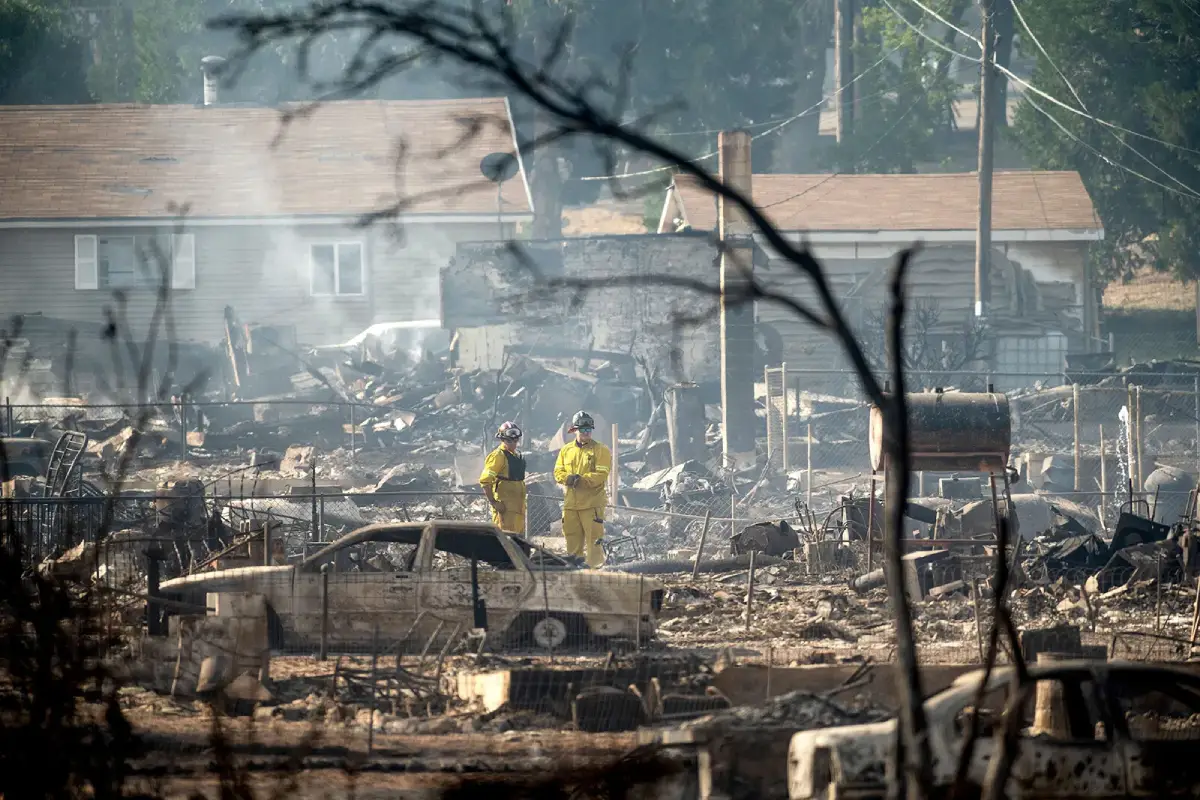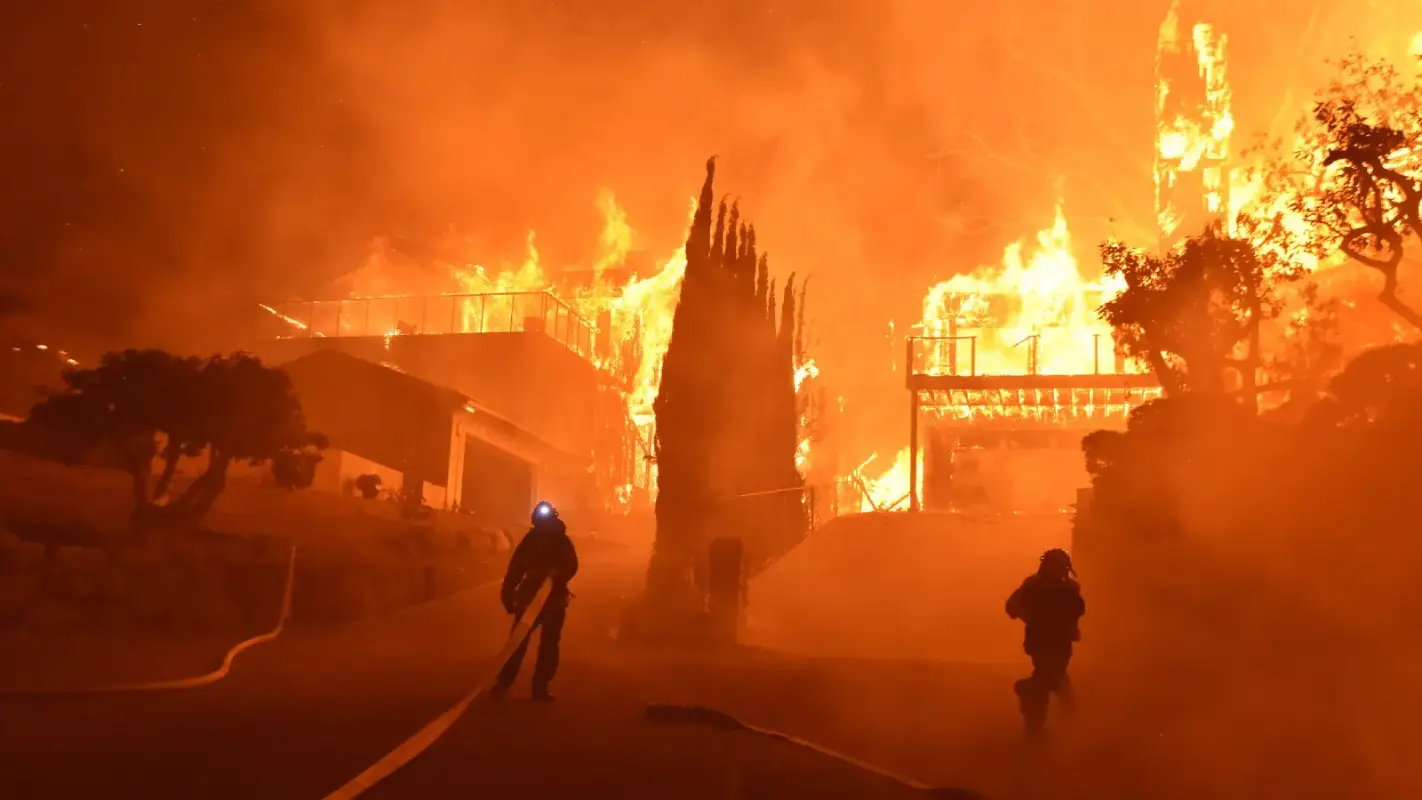Wildfire In Oregon Grows Rapidly, And Many Fires Are Wreaking Havoc Across The West, Threatening Lives And Reducing Air Quality
Over the past week, the West has been hit by a wave of wildfires, with temperatures reaching triple digits and high winds making it difficult to put out the flames. Thousands of people have been evacuated, and air quality has plummeted.
According to data from the National Interagency Fire Center, 92 enormous wildfires are currently burning across the United States, destroying roughly 728,000 acres. The majority of these flames are located in the Pacific Northwest.
Drought-stricken Western states have become breeding grounds for thirsty, dry vegetation, which can spark more explosive wildfires that burn hotter and longer as temperatures rise.
Among the ten active wildfires in Oregon on Sunday, the Cedar Creek Fire, which was started by a lightning storm on August 1, grew by more than 32,000 acres over the weekend and was ultimately out of control after consuming 85,926 acres in extremely steep and inaccessible terrain.
Firefighters spent weeks attempting to establish containment lines, but the winds from the east, combined with the heat and dry fuels, caused the pipes to fail. Mandatory evacuations were called with the fire making wind-driven runs and threatening 2,230 homes and 443 businesses in Lane and Deschutes counties.
On Sunday, authorities reported that the harsh weather of the previous two days was dissipating, with temperatures beginning to decrease and variable winds settling down. Officials still anticipated that the fire would spread through the dense fuels.
Oregonians had to deal with power outages while wildfires raged throughout the state’s arid landscape. Pacific Power executed Public Safety Power Shutoffs over the weekend to lessen wildfire risk as winds increased, leaving thousands of customers without electricity across Oregon, including in the Portland suburbs.
As dry air and high temperatures fuelled fire behavior across the region on Sunday, red flag warnings were issued for portions of the Washington Cascades until Sunday night.
During a record-breaking heat wave, what was once Tropical Storm Kay made a rare close pass to California, bringing record-setting rainfall and record-breaking temperatures for the state’s population.
Some areas of Southern California experienced flooding due to the persistent rain, but the rain also aided the fire departments in their efforts. Crews fighting the Fairview Fire were able to increase containment of the 28,307-acre burn to 49% over the weekend with the help of adequate moisture, rainfall, and lower temperatures.
Cal Fire reports that two people were killed and a third injured due to the rapidly spreading fire that started on Monday in Riverside County and has since burned 35 buildings and forced thousands of others to flee their homes.
According to the Federal Aviation Administration, a pilot and two firefighters were hurt when a Fairview Fire helicopter crashed into a garden while trying to land at a nearby airfield on Saturday.
Officials said intermittent showers halted the fire on Sunday, and some evacuation orders were downgraded to warnings. Cal Fire estimated that the fire would be fully contained by Saturday.
On Sunday, the Mosquito Fire in El Dorado and Placer counties, located north, had burned 46,587 acres and was just 10% contained. On Sunday, the Moose Fire in Idaho, located about 17 miles north of the town of Salmon, was 37% contained after having burnt through 126,252 acres.
Officials have warned that the next day could increase fire behavior due to dry, unstable conditions and the possibility of strong winds. Southern California, Arizona, and New Mexico were at a slightly increased risk for heavy rain during the night.
Forecasts indicate that precipitation will fall in northwest Arizona on Monday and then make its way into Nevada the following day. CNN Meteorologist Robert Shackelford has issued a flood watch for eastern Nevada from Tuesday through Wednesday night.
Meanwhile, Shackelford said that fresh fires could be started in northern Nevada on Monday due to the possibility of isolated dry storms. In addition, winds of 15 mph and dry air should increase the fire weather danger in eastern Montana.

Wildfires Degrade Air Quality
Air quality warnings were in effect for many Washington, Oregon, and Idaho as multiple fires tore through the western states. Over the weekend, winds transported smoke from the state’s several fires, turning the skies orange and foggy in some regions of Oregon.
The National Weather Service in Spokane said that the smoke in Washington was so dense that it partially obstructed sun radiation and caused temperatures to be lower than expected.
Smoke can irritate the lungs and eyes, making some medical conditions worse.
The most vulnerable groups include newborns and young children, those with heart or lung problems, elderly adults, and pregnant women. Many people received instructions to stay indoors, keep their windows and doors closed, and refrain from intense outside activities.
According to a study by UCLA researchers released last month, exposure to excessive heat and wildfire smoke simultaneously has increased health risks. As a result, this threat is predicted to grow.
Researchers wrote: “Rising global temperatures and more frequent extreme heat events are projected to increase wildfire size and intensity, signifying a growing public health threat from concurrent heat-smoke exposure.”


